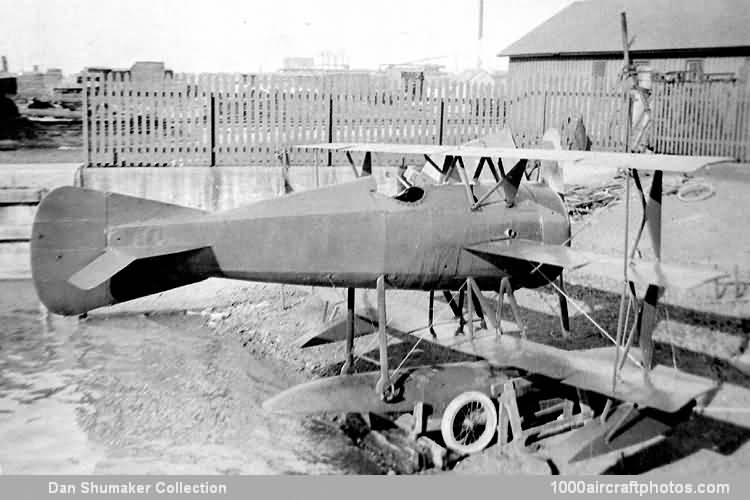01/31/2012. Remarks by Johan Visschedijk: "In 1917 the USN gave Curtiss a contract for five single-seat seaplane scouts to be powered with the American-built version of the 100 hp French Gnome rotary engine. This was the first Curtiss design laid down from the start with a rotary engine and was given the designation of GS for Gnome Scout. The designation was altered to GS-1 and GS-2 when a contract for one additional GS was received.
The first five Gnome Scouts, USN serial A-445 to A-449, were biplanes designated GS-2. Little is known of these beyond photographs and Curtiss test pilots' comments on their tail heaviness. First acceptance was on February 14, 1918, and the last was on August 9; A-447 was sold as surplus in August 1920 and A-449 was struck off charge in November 1923.
The sixth Gnome Scout, designated GS-1 with USN serial A-868, was not merely a three-winged version of the GS-2 but was an entirely different design. It was a triplane that drew heavily on Curtiss experience with the S-3 to S-6 and other triplanes.
Other than the three wings, the unusual feature of the GS-1 was the incorporation of shock absorbers in the struts between the fuselage and the main float. Seaplanes with their rigid truss between float and fuselage had always taken a beating during rough-water take offs and alightings, but the GS-1 seems to have been the first aeroplane on record in which something has been done about it.
Unfortunately, the scheme didn't work well. The flexibility in the rigging allowed the trim angle of the float to change at high speed on the water and induce undesirable porpoising of the entire aeroplane. The GS-1 was nicknamed "Flying Door Knob Control" by Curtiss pilots because of the detail of one of the controls on the tricky carburetion system of the rotary engine. The GS-1 was delivered to the USN in Florida on January 1, 1918. After demonstration by a Curtiss test pilot, the Navy acceptance pilot made several flights but damaged the machine beyond repair on a landing on April 1."
